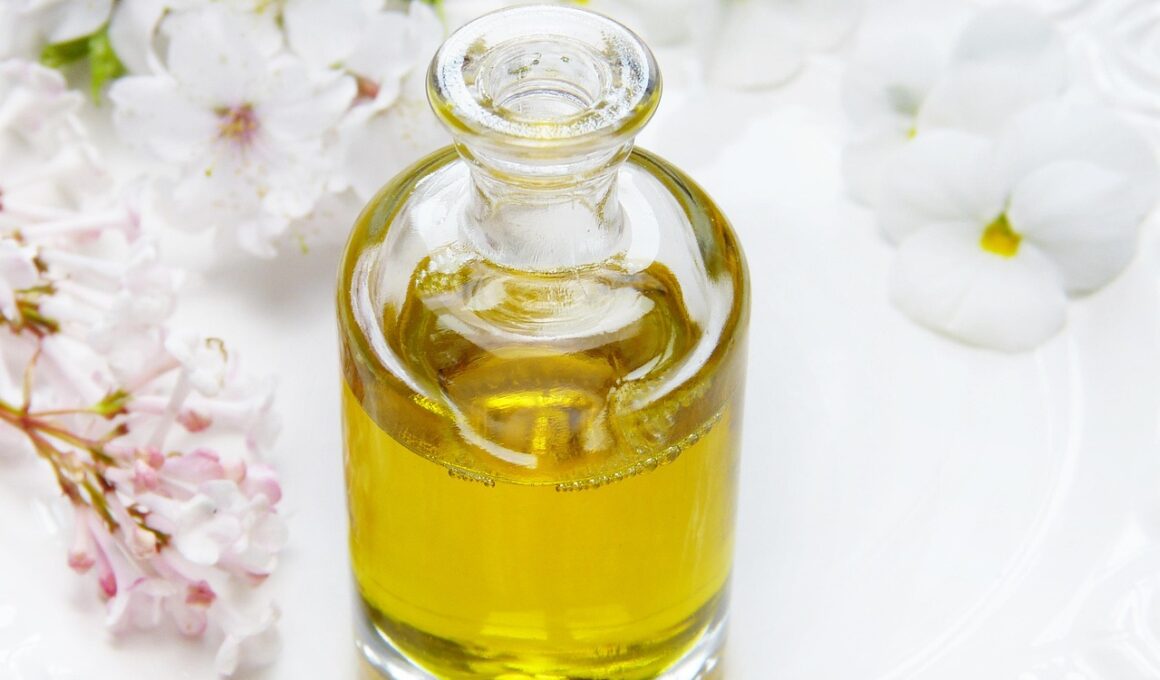Aromatherapy Blends That Ease Separation Anxiety in Dogs
For many dog owners, separation anxiety in dogs can be a distressing issue. To address this, aromatherapy has emerged as a holistic approach that some believe to be effective. By using essential oils in a way that may soothe and relieve stress, you can create a calming environment for your furry friend. Many oils can help ease anxiety, but not all are suitable for pets. It is essential to understand which essential oils can be safe for dogs. Commonly recommended oils include lavender, chamomile, and bergamot, as they have calming properties. You can use these oils in several ways, such as diffusing them in the room, incorporating them into a massage, or simply placing a few drops onto a cotton ball. It’s crucial to perform a patch test to ensure your dog doesn’t have an allergic reaction to any oil. Furthermore, it is vital to select high-quality essential oils, preferably organic and free from synthetic fragrances or additives, to promote overall well-being. Remember, while aromatherapy can be beneficial, it should complement other training techniques for separation anxiety.
Music therapy for dogs is another innovative strategy that owners can try to mitigate anxiety. Many studies suggest that music can have a calming effect on pets, promoting relaxation and reducing stress. The best types of music for alleviating anxiety in dogs often include classical compositions known for their soothing melodies and slow tempos. Research indicates that soft sounds can help lower heart rates in dogs, making them feel more secure and content while you’re away. Specifically composed tracks for dogs, featuring gentle themes and sounds, are now widely available. These help create a peaceful atmosphere while you’re gone, allowing your dog to experience tranquility even in your absence. You can play this music on a low volume to avoid startling your dog. Many pet owners have shared positive experiences with this method, claiming their pets have responded well to music during stressful situations. Moreover, consistency is key. Establishing a routine that incorporates aromatherapy and calming music while you’re away can foster a sense of security for your pet, promoting better emotional health over time. Therefore, combining both approaches may yield even more significant results.
This combination of aromatherapy and music can be very effective.
To maximize the benefits, consider timing when introducing these elements into your dog’s environment. Start by playing calming music before leaving home, giving your dog a few minutes to acclimate to the sound. Concurrently, you can introduce aromatherapy by diffusing chosen essential oils in the air. This holistic approach helps build a positive emotional response towards both music and scents. Gradually, your dog may start associating these calming elements with your absence. This will help mitigate their anxiety levels during those times. Moreover, creating a cozy space for your dog can further enhance this experience. Ensure the area is familiar and comfortable with your dog’s favorite blankets and toys. Incorporating these stress-relief techniques can significantly help your pet adapt to alone time. Remember, like humans, all dogs are different; what works for one may not work for another. Keep observing their reactions and adjust accordingly. If your dog shows signs of distress despite these strategies, consulting a veterinarian or animal behaviorist is usually advisable for tailored solutions.
To create an ideal blend of aromatherapy for anxiety-related issues, consider specific combinations of essential oils known for their calming properties. For instance, a blend of lavender and chamomile may create a relaxing atmosphere. To prepare this blend, mix a few drops of each oil with a carrier oil like sweet almond or coconut oil, which is safe for dogs. This mixture can be applied to their bedding or directly onto their collar to ensure they receive the benefits throughout the day. Alternatively, you can use a simple diffuser to disperse the blend in the room while playing calming music simultaneously. This method not only enhances the oil’s effectiveness but also creates a peaceful environment. For added benefits, consider incorporating the scent into their playtime routine. Dogs often associate scents with positive experiences, which can help alleviate their fears. It is crucial to experiment and figure out which blend best suits your pet’s unique preferences. Always prioritize safety, ensuring that ingredients are pet-friendly and carefully monitoring their reactions to any new oil introduced into their environment.
Monitoring Your Dog’s Response
While implementing these methods, closely observe your dog’s reactions to the aromatherapy and music. Each dog has its unique temperament, and responses may vary based on their personality and previous experiences. Take note of their body language and behavior. Signs of relaxation might include lying down, heavy eyelids, or a generally calm demeanor. If your dog displays discomfort, actively reconsider the oils you’re using or the volume of the music. Always remember that the goal is to create a sense of security and comfort. Additionally, consider making necessary adjustments based on the time of day or their activity levels. For ultra-sensitive dogs, reducing the concentration of oils or opting for softer music may yield better outcomes. Some owners also find success using combinations of both music and aromatherapy in conjunction with other training techniques. Providing consistent, loving reinforcement during these sessions can significantly contribute to easing their anxiety over time. Moreover, it is always possible to seek professional advice if challenges persist in managing your dog’s anxiety issues. Consulting experts helps develop a comprehensive approach.
Furthermore, making transitions easier for your dog can significantly impact their separation anxiety levels. Implementing a gradual desensitization process might be beneficial. Start by leaving your dog alone for short periods and gradually extending that time. This allows them to adjust to your absence without experiencing overwhelming stress. Additionally, try to make your returns as low-key as possible to prevent them from developing anxiety around your comings and goings. When you return home, keep calm and composed instead of overly excited. This helps them understand that being alone is normal and that your departure does not equate to loss. It can be beneficial to prepare interactive toys to distract your dog during your absence. Such toys can keep them engaged, which could further reduce feelings of anxiety. Always remember that patience is key during this process. It may take time for your dog to adjust to these techniques fully. The goal is to build trust between you and your furry companion to ease their anxiety, creating a happier and healthier dynamic in your relationship.
Conclusion
In conclusion, using both aromatherapy and music therapy may align well within an overall strategy for managing dog anxiety. These methods, grounded in holistic principles, can provide a safe and comforting atmosphere for our canine companions. The blends of essential oils like lavender and chamomile are likely the most effective when applied correctly, along with soothing music. Combining these approaches helps create a relaxing environment conducive to stress reduction. Moreover, it’s essential to adjust strategies based on your dog’s reactions. Closely monitoring their behavior during implementation can maximize effectiveness. Gradually introducing alone time and minimizing overwhelming excitement upon your return can also enhance the process. Always prioritize your dog’s emotional well-being, providing them with love and consistency. As you integrate these techniques into your dog’s routine, it could ultimately contribute to lower anxiety over time and a stronger bond between you. Remember to seek professional guidance if your efforts don’t yield positive outcomes. There are many resources available to help you create a tailored approach for your dog’s anxiety related to separation.
Ultimately, the health and happiness of our dogs are paramount. We strive to provide the best for them, which includes having them feel safe and secure. By understanding the unique needs of our dogs and utilizing holistic approaches like aromatherapy and music therapy, we are fostering a supportive environment. It’s a wonderful step towards enhancing their emotional well-being. Take time to research, respect their needs, and pay attention to their individual preferences. The implementation of these strategies can dramatically benefit their quality of life. Always remain attentive to their reactions to refine your methods. Should anxiety persist beyond your control, consulting with professionals can yield new insights and solutions. Ensuring your dog feels loved and supported is key as they navigate their emotional challenges. The culmination of aromatherapy and therapeutic music may indeed pave the way for a happier home not just for your dogs, but for you as well. Making these changes can bring forth rewarding and enriching experiences for both you and your companion, leading to decreased anxiety and a thriving relationship for years to come.


